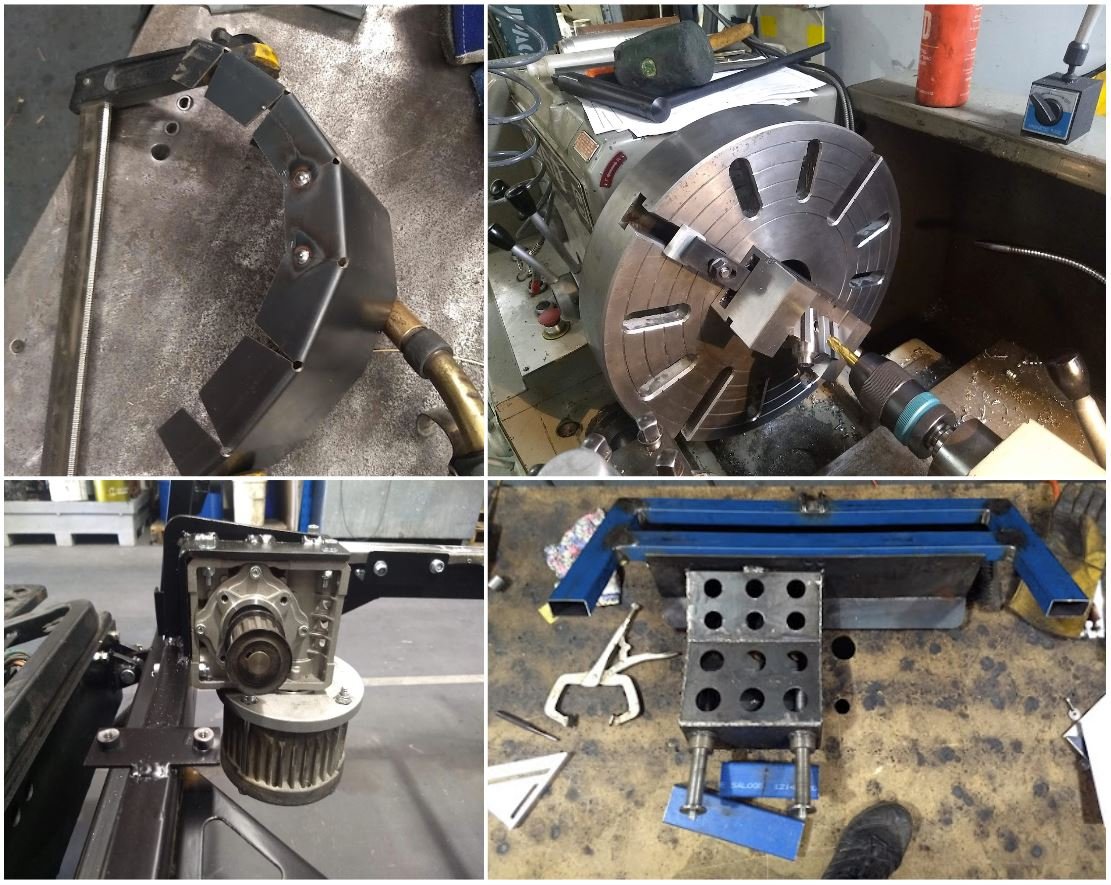MPS IR-5
The MPS IR-5 is a mobile LPG infrared asphalt reheat machine used for imprinting decorative patterns onto roads. This project involved redesigning an existing static version of the machine to be compatible with Australian standards, as well as turning it into an automated mobile machine suitable for modern road construction sites.
Key Features:
Designed & certified to Australian standards
110% improvement in work area coverage rate compared with existing machines
Electronic ignition and flame monitoring for reliable and safe burner control
MPS IR-5, control panel shown top left
Project Details:
The project scope spanned the design of the gas burner system, electrical power system, control system, carriage drive mechanism, burner wing lift mechanism and the structural frames.
As a high power industrial gas appliance, the design was subject to strict design standards. I worked closely with the regulatory authority throughout the project to ensure certification was achieved.
I built and tested the first machine in-house including all the steel fabrication, machining, painting and wiring.
A PLC architecture was implemented for automating the machine to provide very high reliability and short development time.
A comprehensive documentation pack was created for the project. This included technical information for certification, a user operational manual and manufacturing information to enable outsourced production.
Automated Pilot Burners - A Difficult Design Challenge:
The machine makes use of two automated pilot burners for ignition and flame monitoring. These play a critical safety role by ensuring no uncombusted gas is ever allowed to accumulate creating an explosion potential.
The pilot burners sit in close proximity to the main burners to ensure their reliable ignition. This created an issue because during operation the area is blanketed in exhaust gases, reducing the oxygen concentration in the air, leading to incorrect air/fuel ratio in off the shelf burners. This caused a weak flame that was not able to be reliably detected by the flame monitoring circuit. Off the shelf burners also did not include robust spark ignition systems that would survive the operating environment.
To address these issues, a custom pilot burner was designed. The oxygen concentration issue was addressed in two key ways. Firstly, the venturi air intake was positioned as far away from the main burners as possible so it was ingesting the minimal amount of exhaust gas. Secondly the injector jet and venturi inlet hole diameters were tuned for a higher air/fuel ratio to account for the lower oxygen concentration.
This was a complex and coupled fluid mechanics, thermodynamics and electronics design challenge that required extensive iteration and testing. To aid in this process a bench test rig was developed that allowed for precise control and measurement of flow parameters and flame monitoring performance. A PCB had to be designed to isolate the spark ignition high voltage from the electrode to allow measurement of the flame monitoring current.
After 3 months of iteration, analysis and testing a highly reliable and physically robust design was settled on an put into production.
Example drawings & schematics required for certification
Wiring to industrial standards used throughout machine
Fabrication work
Custom designed pilot burners and venturi air intake system
Pilot burner test rig including custom designed high voltage isolation PCB





